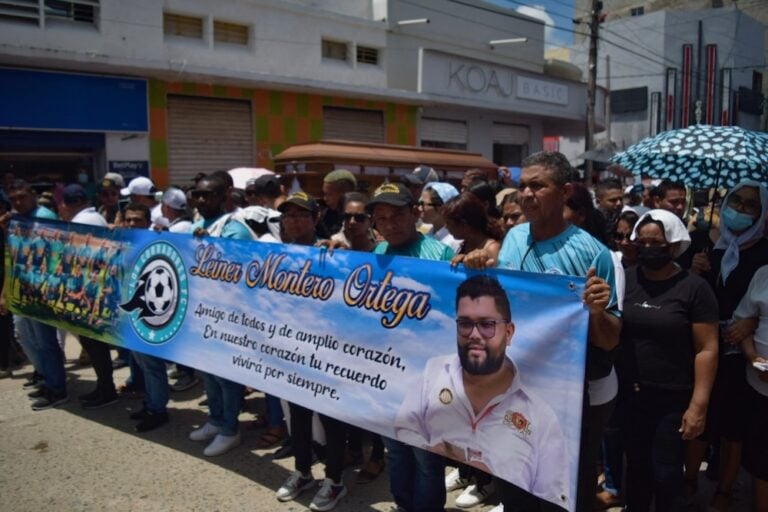(FLIP/IFEX) – The following is an abridged version of a 9 February 2007 FLIP press release: Press worked in a climate of terror: report on violations of press freedom in Colombia in 2006 The press made information available in the midst of a climate of terror. That sums up the Colombian media’s situation in 2006. […]
(FLIP/IFEX) – The following is an abridged version of a 9 February 2007 FLIP press release:
Press worked in a climate of terror: report on violations of press freedom in Colombia in 2006
The press made information available in the midst of a climate of terror. That sums up the Colombian media’s situation in 2006. The peace process with the paramilitary groups, the congressional and presidential elections, and corruption scandals were the major topics on journalists’ agendas last year. Although both regional and national media outlets met the challenge to cover them, they did so under adverse conditions.
In total, FLIP recorded 140 press violations in 2006, an increase of 37 percent compared to 2005 (1). Of these 140 violations, the paramilitary groups were allegedly responsible for 38, the Army or the National Police for 21, the Revolutionary Armed Forced of Colombia (Fuerzas Armadas Revolucionarios de Colombia, FARC) guerrilla group for 18, and public officials for 15.
The paramilitary groups’ demobilisation did not improve the climate for press freedom, as had been hoped, especially on the Atlantic coast. They continued to have a negative impact on the flow of information. Despite the fact that paramilitary groups are in the midst of a peace process with the government and have committed themselves to a ceasefire, both local and national media outlets reported threats by existing groups or new ones that have recently sprung up in some areas. Despite these threats, the media reported on related developments and carried out extremely important investigations on the topic.
The FARC were allegedly responsible for 12 threats, one attack on a media outlet’s infrastructure, and two kidnappings, among other violations. On 16 August, two “El País” newspaper journalists from Cali were kidnapped by the FARC when traveling through an area of Meta and held for two days.
The conduct of the Army and National Police was problematic, especially while they were handling disturbances or public demonstrations. On several occasions, journalists were assaulted or illegally detained. On 26 October, two reporters from national media outlets were assaulted by members of the Mobile Anti-riot Squad (Escuadrón Móvil Antidisturbios, ESMAD) while they were covering a university students’ march in Popayán, Cauca.
The electoral periods brought an increase in press freedom violations, especially threats. The campaign months – March and May – were those with the largest number of violations, 20 and 21, respectively. Journalists’ investigations of congressional candidates or topics that were sensitive for certain election campaigns drew negative attention to journalists.
Obstructions to journalists’ work increased. An example of this was the 18 October interruption in Sucre and Córdoba of the broadcast of the congressional debate on the relationship between politicians and paramilitary groups from that region of the country. Two weeks prior, nearly 60 percent of the edition of the newspaper “El Meridiano de Sucre” with a front-page story on the same issue, was collected by unidentified people to prevent its broader circulation.
Finally, public bodies continued to use the allocation of advertisements to pressure media outlets to provide favourable coverage, in both departmental capitals and rural municipalities. As well, some journalists continue to request government advertising contracts as a condition for covering in a positive manner any development.
(. . .)
Threats continued to be the most common form of aggression against journalists, an effective silencing mechanism and the main motive for journalists’ departure from their regions and even the country; 77 threats involving 88 victims in total were reported to FLIP. In some cases, the threat was made against a group. The paramilitary groups were behind 27 of the threats, the FARC 12, and for 27, the likely source was not determined; public employees were responsible for six, private individuals for four, and the Army or National Police for one.
The second most frequent violation was inhumane or degrading treatment, with 24 cases. Public officials were allegedly involved in four cases and the Army or National Police in eight.
(. . .)
For the detailed tables and the complete text of the report in Spanish, see: http://www.flip.org.co/secciones/informes/2006/informe_2006_flip.doc
NOTES:
(1) Not all press freedom violations in the country are reported by FLIP. There are various reasons for this, including: journalists may underestimate the importance of incidents; they may not realise that what occurred was a violation of their right to inform the public; they are afraid to report the incident; they do not trust the authorities; they do not have the support of the media outlet for which they work; or they are unfamiliar with the procedure for reporting an incident. As well, in some departments, the information FLIP has is scarce, which makes it difficult to have precise statistics.


